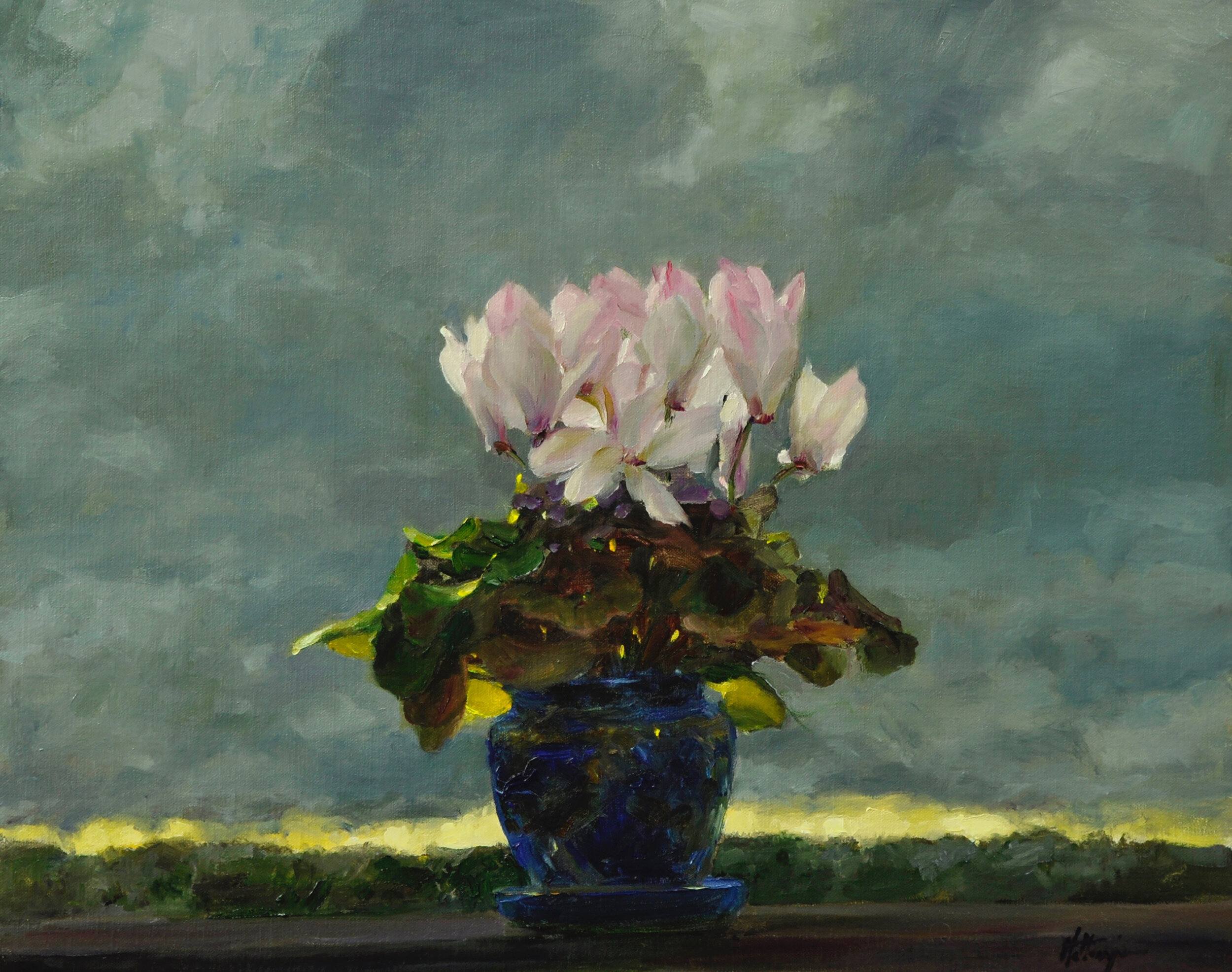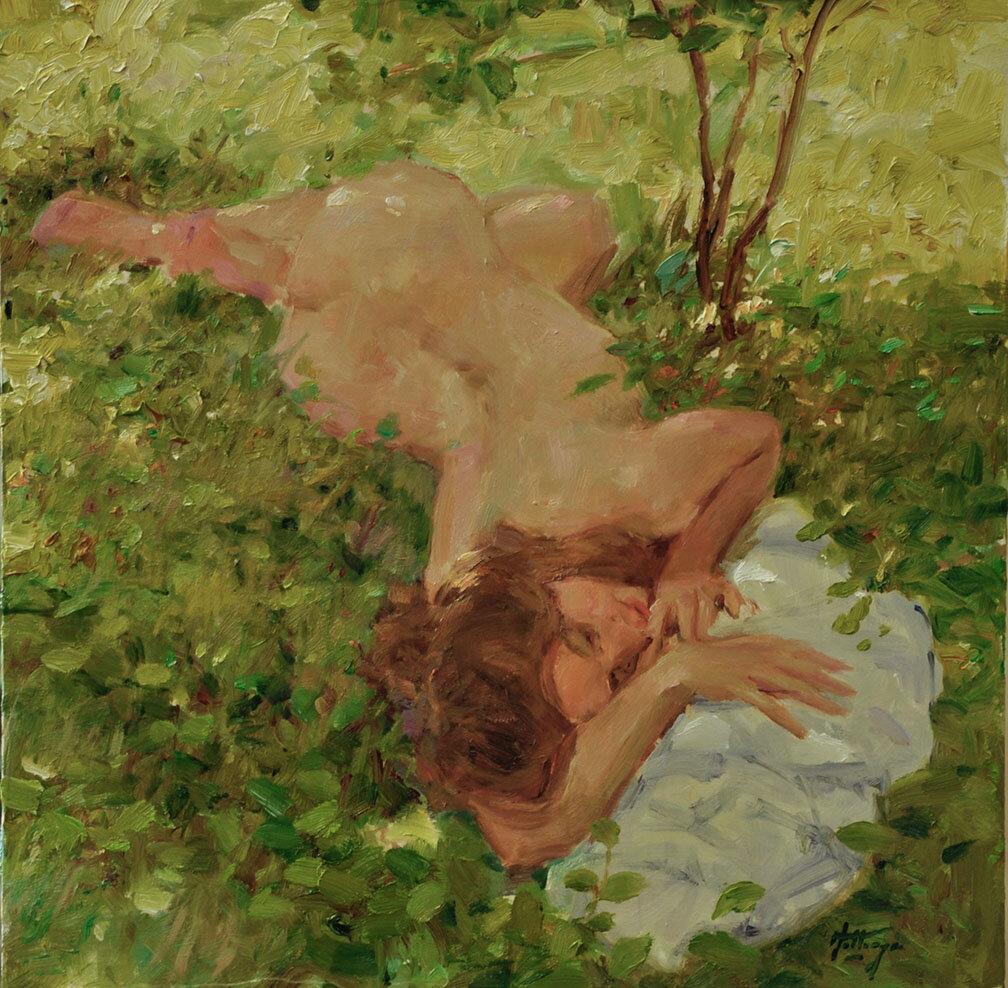7 out 10 artist suffer from Photophobia. This career-ending infection invades the artist early in their career, slowing their development and in some cases prevents them from even starting a career. It can keep one out of competitions and galleries if left untreated. It can manifest itself in other forms of painting - like Plein Air. It first attacks the editing ability of an artists thinking, then easily spreads. One will be out in the field painting and simply be unable to leave something entirely unnecessary to the work off the canvas.
A barn with ten windows and a tree in front can look great in a photo or in person, yet doesn't transfer well to canvas. Even a great photo needs editing. An artists skills should tell him what needs editing. A photo of a man writing at a desk can make for a great painting when one doesn't suffer from Photophobia. For example, in the photo, we know the man has four fingers and a thumb even though we see only three fingers on each hand due to objects blocking our view of them. However, perhaps due to the style of painting the artist uses, the man appears to have just three fingers on each hand. Little things like too many windows in a barn or too few fingers on a hand can keep one out of a competition and a gallery.
Photophobia affects design and composition. Being afraid to change anything about the photo can destroy the design of a painting - and design is of utmost importance to an artist. A good design holds the viewer's interest, keeps the painting fresh looking and full of life. Artists become slaves to photos and the fear of altering them. They carry that thinking into the field and into the studio with them. I once saw a friend destroy a wonderful on-the-spot painting in the studio by corrections he believed necessary because of the photo he took of the subject. Believing the photo always to be the best way of capturing a subject can prevent one from developing as an artist.



